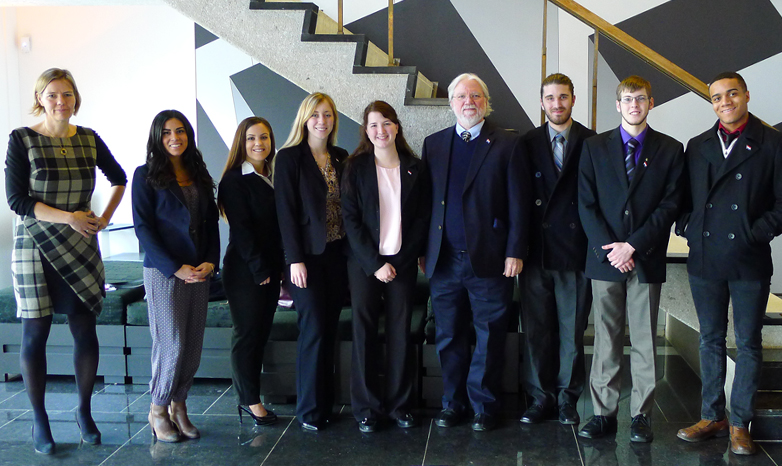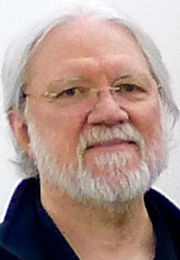SRU students attend Model NATO

(From left) Heleen Bakker, deputy head of the political department at the embassy of the Kingdom of the Netherlands, stands with the SRU Model NATO contingent during their visit to Washington, D.C.
Feb. 18, 2016
SLIPPERY ROCK, Pa. - Global collaborative defense simulations. They aren't just for political science majors anymore.
In fact, of the nine Slippery Rock University students that traveled with

BROWN
George Brown, an SRU professor of political science, to participate in the 31st Annual International Model NATO Conference Feb. 11-14 in Washington, D.C., only three fell into that category.
"We had a good cross section of students," said Brown, who has accompanied SRU student contingents to the conference for the past 10 years. "We had psychology, biology, early childhood education and sport management majors on this trip. All are welcome and they learn from one another through their unique perspectives."
Representing SRU were: Adam Bridges, a senior from Murraysville; Kris Davis, a sophomore from Moon Township; Elizabeth Hernandez, a freshman from Grove City; Maria Miller, a freshman from Pittsburgh; Hunter Smith, a freshman from Oakdale; Cassie Holub, a freshman from Chagrin Falls; Audrey Huddleston, a sophomore from East Palestine, Ohio; Mitch Overdorf, a sophomore from Mill Hall; and Jenna Hermann, a senior from Monogahela.
The conference, hosted by Howard University, is a simulation of the proceedings of the North Atlantic Treaty Organization, augmented by preconference study and briefings at NATO member's embassies in the nation's capital.
The conference provides a unique opportunity for college students to study the role, structure and activities of NATO, as well as the military, political-security, economic and social issues facing the coalition.
Through simulations, students gain a better and clearer understanding of the capabilities and constraints that shape the policies of NATO countries in determining matters of collective security. In addition to dealing with a prepared agenda, students tackle a contemporary crisis revealed to them at the conference.
According to Brown, this year's crisis was the unsolicited crossing of the Russian military into Lithuania, accompanied by a simultaneous terrorist attack on a liquid petroleum gas facility.
Each participating university represents a NATO member state. Student delegations are then briefed on foreign policy at the embassy of the country it represents. SRU students were assigned to the Netherlands.
"The embassy visits are great," Brown said. "Students have a chance to meet and speak with real military attaches and political affairs officers. This isn't reading an abstract or a book. It's face-to-face meetings about real issues with the people for whom NATO is a real thing. That interaction is extremely useful and powerful."
For the competition, there are five different teams consisting of one or two students representing each NATO country. The five teams, which correspond to actual NATO groups, include: North Atlantic Council, Political Affairs Committee, Defense Planning Committee, Nuclear Planning Group and Working Group.
The SRU delegation competed against teams from 28 U.S. and Canadian schools including Howard University, Virginia Tech, Kent State University, Baldwin-Wallace College, Mercyhurst College, the Citadel and fellow State System university, Indiana University.
Brown is hopeful of one day establishing a one-credit laboratory experience in international simulations at SRU to better prepare students for not only Model NATO exercises, but participation at Model UN and African Union events as well.
"Something like that would be down the road a bit, but I believe the formal preparation would allow our students to get a lot more out of the experiences and see them be more productive as a result."
MEDIA CONTACT: Robb King | 724.738.2199 | robert.king@sru.edu

